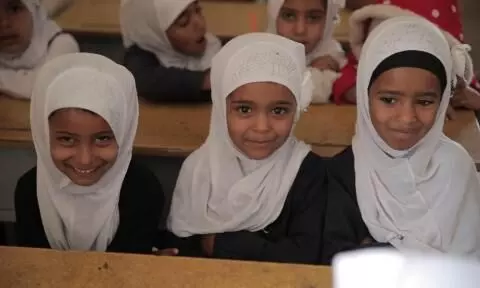
MENA children and youth at risk: UNICEF
text_fieldsThe UN Children's Fund (UNICEF) has cautioned that children and youth in the Middle East and North Africa (MENA) are at extreme risks and in dire need, even after a decade since the Arab Spring protests.
Nearly half of the region's children are deprived of basic amenities and rights, including education, health care, food and shelter. The region is home to the highest unemployment rates among young people, 25 per cent in the Middle East and 29 per cent in North Africa.
"After 2011, the lives and futures of children and young people have been put in jeopardy," the UNICEF MENA regional director Ted Chaiban told the AFP. "This is a combined result of conflict and the fall of oil prices, which has narrowed opportunities for children and young people in the region."
The Covid19 pandemic has led to approximately 11 million job losses in the MENA region, according to UNICEF's Middle East and North Africa Region COVID-19 2020 report. Out of the 124 million people aged 10-24, 38 million requires aid in the MENA region, Chaiban says.
Syria and Yemen: The two worst humanitarian crises
Though the pandemic has channelled all the global attention towards it, the world's worst humanitarian crises still loom in the MENA region. In Yemen, more than 2 million children under five are threatened by acute malnutrition in 2021. UN says that Yemen cannot even afford to worry about the coronavirus as the country is sweeping with several other communicable diseases, including cholera, malaria, chikungunya and dengue. Nearly two-thirds of the population relies on humanitarian aids to survive.
"The situation in Yemen is really dire. I've worked in some pretty tough places, including Syria, Sudan, Libya and Afghanistan, but this is one of the worst and most desperate places I've experienced," said UN High Commissioner for Refugees (UNHCR) Representative in Canada Jean-Nicolas Beuze.
Since the 2011 Syrian civil war, about 5.6 million Syrians are still refugees, while other 6.2 million people are internally displaced, with half of the impacted being children.
With the pandemic intensifying the humanitarian needs in the region, aids to Syria are also hindered because of lack of money and international sanctions, according to Khaled Hboubati, President of the Syrian Arab Red Crescent.
"The humanitarian process is stumbling due to the lack of the fuel needed for the ambulances, power station, generator for the hospital and the blood banks," said Hboubati, adding that the volunteers also undergo the same dismal living conditions.
Need for boosting efforts in MENA
Chaiban said that it has become crucial for a new relationship between governments and young people. He said its high time to reform the education sector around the region and to equip children and young people with the skills necessary to match the demands of the rapidly changing economy, market and jobs of the future.
He said that there should be more chances for the children and youth to express themselves, raise concerns and share ideas in a constructive manner on poverty, inequality, inequities and improved governance.












